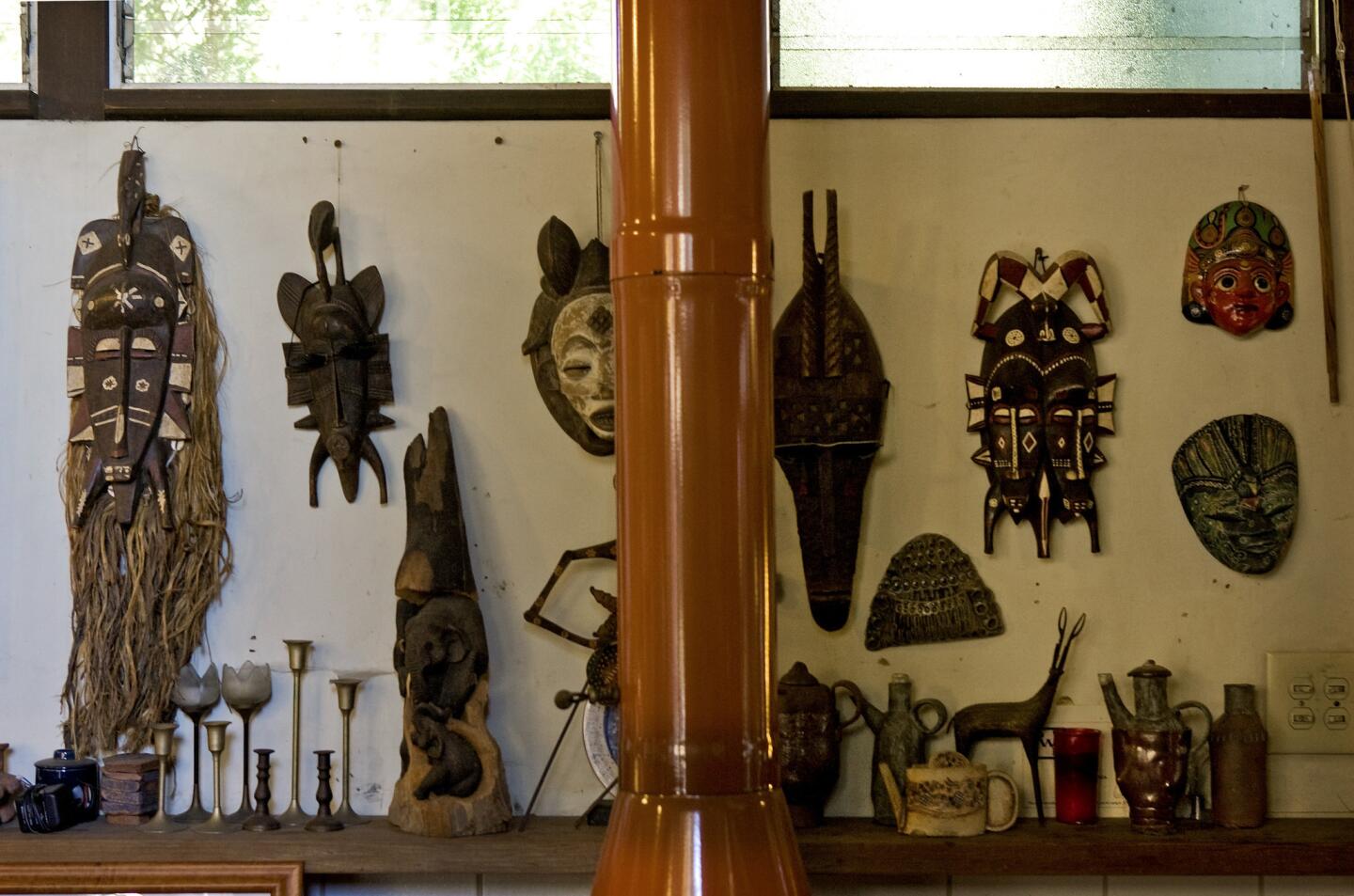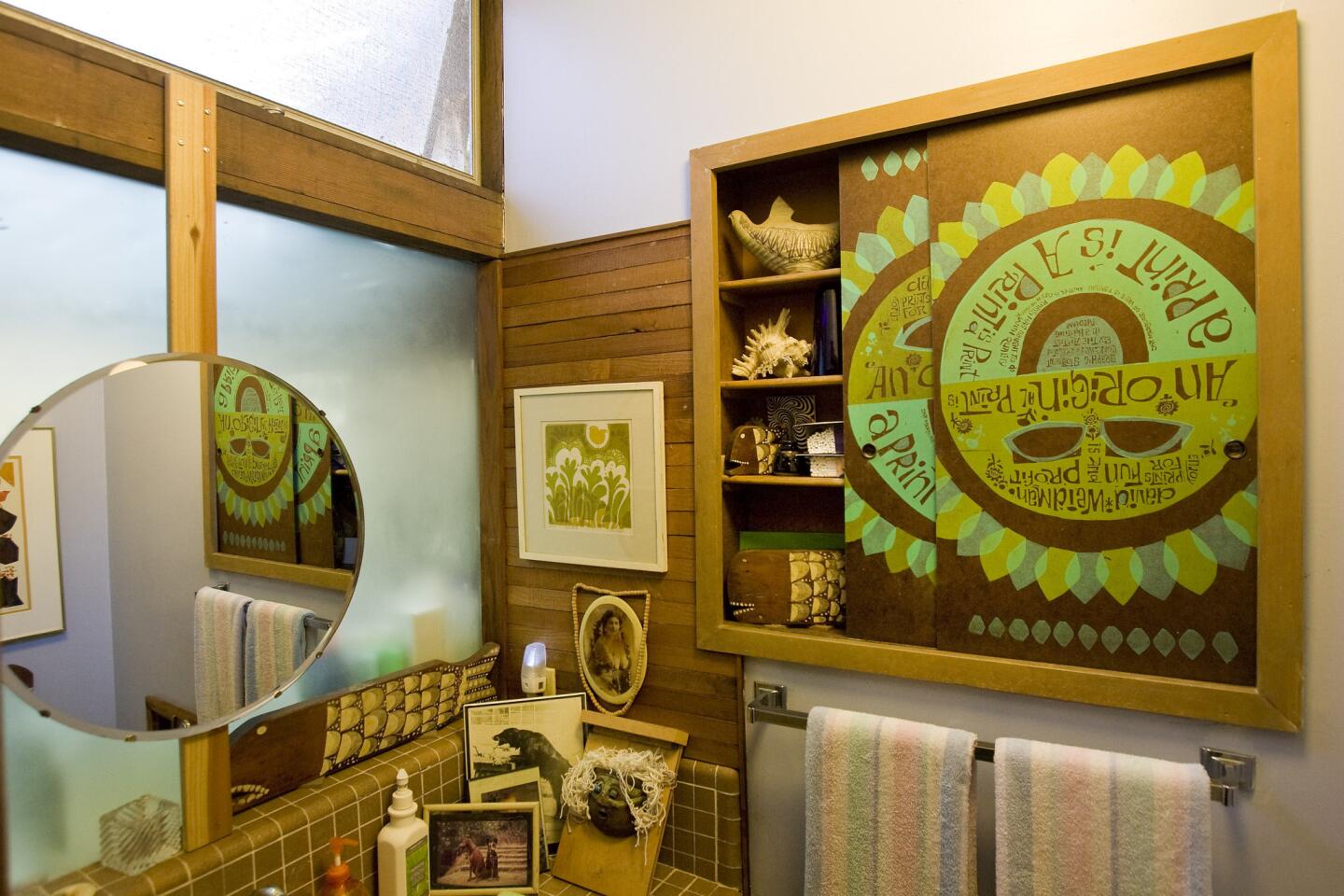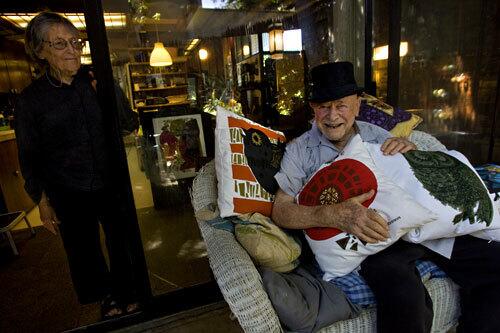
The Weidmans live in a rambling L.A. home that they designed and built themselves in the 1950s, on a hillside lot bought at a city auction for less than $1,000. David Weidman’s touch is everywhere: in the address numbered and lettered by hand out front, in the ceramic mailbox, in tiles surrounding the studio door. (Ricardo DeAratanha / Los Angeles Times)

A hint, courtesy of the artist. (Ricardo DeAratanha / Los Angeles Times)

David and Dorothy met in art school after
Advertisement

African carvings and masks fill a wall behind the stovepipe chimney. (Ricardo DeAratanha / Los Angeles Times)

Glassware as colorful as Weidman’s silk-screen line shelves by a patio door. (Ricardo DeAratanha / Los Angeles Times)

Another piece of Midcentury style: the capiz lamp on the patio. (Ricardo DeAratanha / Los Angeles Times)

Weidman learned to print his designs on Masonite. Pictured here: his graphic treatment of cabinet doors in the bathroom. (Ricardo DeAratanha / Los Angeles Times)
Advertisement

Weidman’s work in cartoon animation and print illustration put food on the table but didn’t satisfy his artistic ambitions. Inspired by Matisse, Picasso, Chagall and

The renewed interest in Weidman’s work has yet to reap a financial windfall, says his daughter, Lenna, who maintains the David Weidman website, where her father’s prints are sold. An August show is planned for the Vintage Collective in
Weidman stopped making silkscreen prints in the 1980s, and the screens have since been destroyed, meaning all that’s left of the work from the 1960s and ‘70s are numbered prints that the artist still signs as they sell. Sculpture that he created but does not sell also is on display in his studio. (Ricardo DeAratanha / Los Angeles Times)

Weidman applied his graphic punch to old wooden hat blocks too. (Ricardo DeAratanha / Los Angeles Times)

The hand-made mailbox. (Ricardo DeAratanha / Los Angeles Times)




